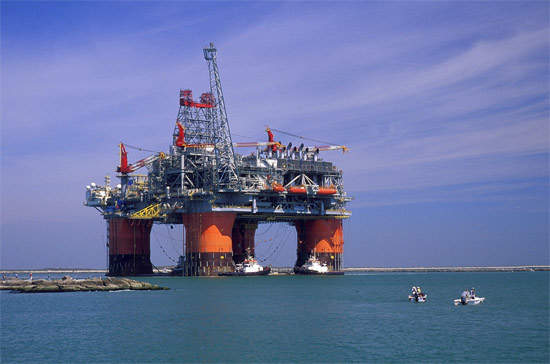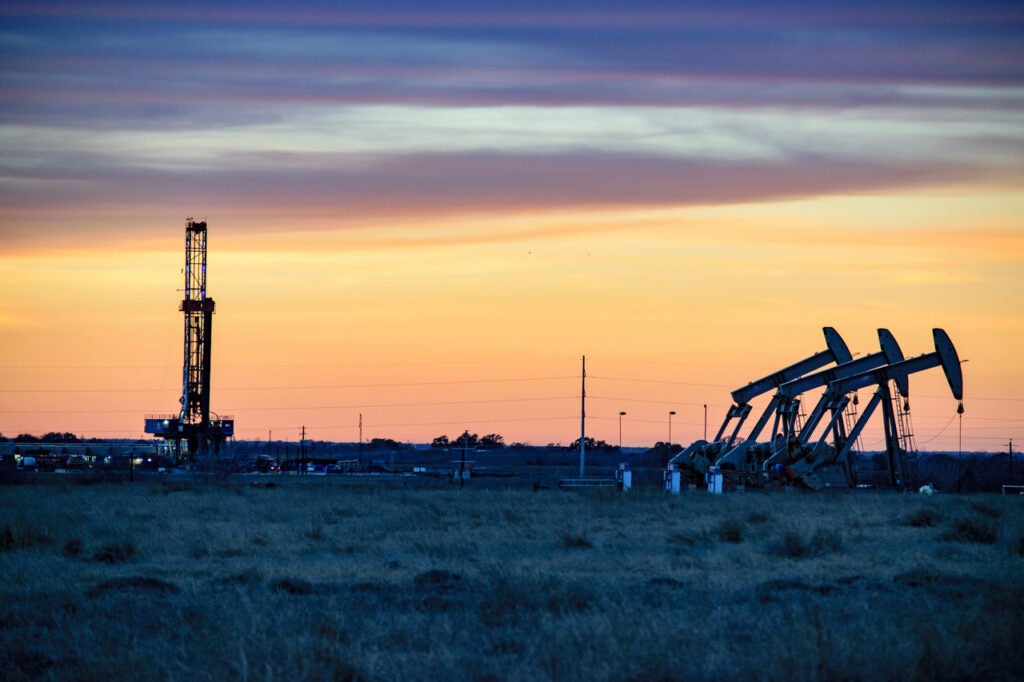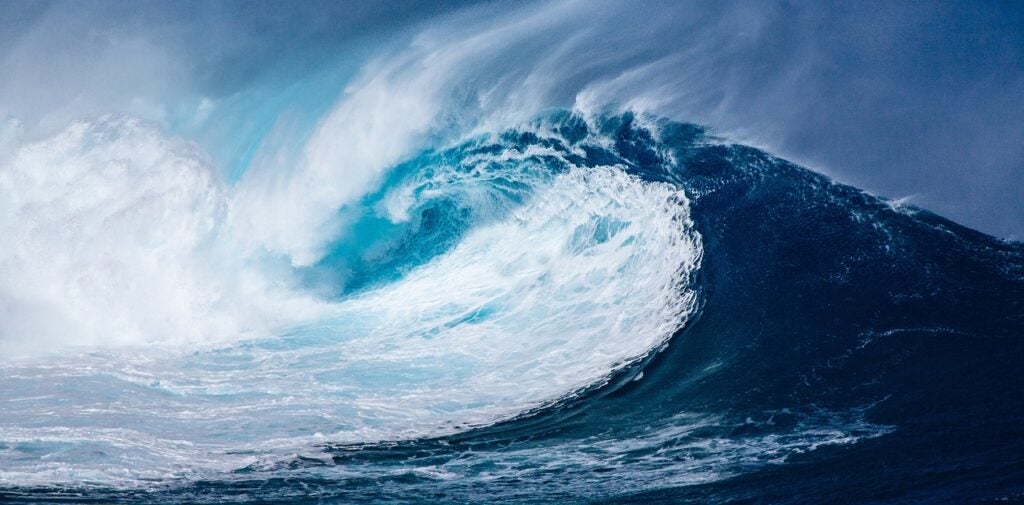
In late-August 2005, hurricane Katrina hit the north-central Gulf coast of the US, causing devastating flooding in New Orleans, $300bn worth of damage and 1,500 casualties.
Unfortunately, the Gulf of Mexico (GOM) region, where Katrina hammered offshore oil platforms, pipelines and onshore refineries is a rich source of the US’s oil supply, producing some two million barrels of oil a day (300 million litres) and approximately 25% of the country’s oil and 14% of its natural gas.
Although Katrina damaged or destroyed 30 oil platforms and caused nine refineries to close, amazingly, there were no major oil spills or injuries. However, the impact was felt in the stock market.
According to Oil Daily, a bible of the petroleum business, in the days after the storm, processing of petroleum in the US dropped by two million barrels a day, a total of 84 million gallons a day, or about 12% of normal intake.
To safeguard oil supplies during conditions like these, a ‘shut-in’ is imposed, where the production cap is set lower than the available output of a site. The total shut-in in oil production from the Gulf of Mexico in the six months following Katrina was approx 24% of the annual production, and about 18% for gas.
See Also:
The region is notoriously prone to adverse weather conditions; the previous year, hurricane Ivan rolled through damaging more than 30 drilling platforms in the Gulf, and causing a shut down of 83% of oil production. Hurricane Rita, in September 2005, was the most intense cyclone ever observed in the Gulf and caused $11.3bn in damage along the coast.
How well do you really know your competitors?
Access the most comprehensive Company Profiles on the market, powered by GlobalData. Save hours of research. Gain competitive edge.

Thank you!
Your download email will arrive shortly
Not ready to buy yet? Download a free sample
We are confident about the unique quality of our Company Profiles. However, we want you to make the most beneficial decision for your business, so we offer a free sample that you can download by submitting the below form
By GlobalData“Based on what we have right now, it appears that drilling contractors and rig owners took a big hit from Rita,” Tom Marsh of ODS-Petrodata said in an interview with the Financial Times. “The path Katrina took was through the mature areas of the US Gulf where there are mainly oil [production] platforms. Rita came to the west where there is a lot of [exploratory] rig activity.”
OIL PRICE AND STRUCTURAL DAMAGE
After Katrina, over half of Gulf production was shut down, with gasoline prices predicted to reach $5 a US gallon ($1.30/l), the highest real price for gas paid in the US since the 1900s. For a while, the average price of a gallon of gasoline in the US was $1.22 higher than it had been a year earlier, but price increases were fairly minor despite the flooding in New Orleans which caused a drop in the stock market.
Apart from the threat to the US’s oil reserves, the physical damage to rigs can also be very costly to repair. On the typical oil rig, the platform may be attached to the ocean floor, consist of an artificial island or be floating. Generally oil platforms are located on the continental shelf, although as technology improves, drilling and production in deeper waters becomes possible. Drilling rigs are mobile and move from location to location looking for resources.
According to a preliminary damage report on 4 October by Interior Secretary Gale Norton, hurricanes Katrina and Rita destroyed 109 oil platforms and five drilling rigs in the Gulf of Mexico. The two hurricanes seriously damaged another 50 platforms and 19 rigs, with semi-submersible rigs breaking free from their moorings.
After Katrina, at least four onshore refineries in Louisiana and Mississippi were out of action for weeks if not months. Environmental concerns were also a problem as nearly 6.7 million gallons of fuel spilled from refineries or tank farms.
NEW TECHNOLOGIES
With global warming and the continuation of extreme weather conditions, technologies have to be deployed to stabilise the rigs to withstand these conditions. One example of a rig designed for the purpose is British Petroleum’s Thunder Horse, which sits 150 miles south-east of New Orleans in the Gulf of Mexico.
The massive structure stands 20 storeys tall and weighs 50,000t. “The rig was knocked off kilter by Hurricane Dennis earlier this year and had to be righted,” said BP spokesman Ronnie Chappell, after the event. “This time, it fared better. The steps we took to make it safe were effective.”
Subsequent investigations also showed that errors in the hydraulic control system led to a ‘partial opening’ of hydraulically actuated valves, according to Mr Chapman, press relations officer at BP, which caused the platform to be demanned ahead of the hurricane, making it easier to topple.
“The unique conditions of Thunder Horse have combined to give the PDQ (production-drilling-quarters) its shape and scale,” said Mike Baur, facilities manager for the delivery of the semi-submersible platform.
“A semi-submersible provides us with a large and stable installation, which can carry the high operating loads imposed by the processing and drilling requirements,” he continued, “while at the same time supporting the additional loads of the dozen or so massive risers weighing around 400t each that will hang off the hull, and the 16 deepwater chain and wire mooring lines that anchor the semi in 1,844m of water.
“The PDQ is also designed to survive a once-in-a-hundred-years storm, and withstand the hurricanes and high seasonal ocean currents which occur in the Gulf of Mexico,” he added.
OFFSHORE IMPROVEMENTS
Between 1995-2004, deepwater oil production rose 500% and deepwater gas production rose 650%. As exploration moves into new areas, and deepwater drilling increases, developing technologies that protect the basic risk areas – such as fixed production platforms, rigs, semi-submersibles, jack-up rigs, quarters, helidecks and other facilities – becomes more important.
In 2007, approximately 30 approvals were granted by the Minerals Management Service (MMS) for technology never before used in offshore energy exploration and production in the Gulf of Mexico.
Some of the main innovations include a high-pressure protection system for pipelines, pre-set polyester moorings for deepwater drilling rigs, and a subsea pump that allows improved oil recovery.
The MMS also emphasises improvements in moored rig station-keeping, and stipulates that drilling contractors should upgrade their mooring systems for mobile drilling units by increasing the number of mooring lines from eight to 12 or 16 and upgrading their anchors. Moorings should also be 40%-50% stronger than in the 2005 season.
“Energy production from the Gulf is vital to our Nation’s energy supply,” said MMS deputy director Walter Cruickshank, “but it’s also imperative that MMS continue our strong emphasis on the measures we’ve implemented to ensure the safety of workers and environmental protection.”
POST-HURRICANE DEVELOPMENTS
Apart from more rigorous general safety checks, there are also changes planned to the jack-up drilling rig – a mobile, offshore drilling structure which is towed to an offshore location and the legs are securely attached to the seafloor. The barge and drilling structure are then slowly raised above the water to maintain stability in the face of high winds, waves and currents.
A key post-Katrina modification is that the height of a jack-up has been increased to improve the level of ‘survivability’ of the equipment in the event of high waves.
A further modification is the installation of GPS locators and black box information storage systems on MODUs (mobile offshore drilling units) to monitor the site after evacuation and track the rig’s location as it’s buffeted by winds.
Probably because oil rig evacuations prove expensive for oil and gas companies, hurricane evacuation remote operation (HERO) technologies have been developed to enable a platform to keep producing barrels of oil even after the crew have been evacuated. Remote operations applications range from normally attended installations (NAI) to full remote operations, called normally unattended installations (NUI).
Stan DeVries, industry solutions architect at Invensys Process Systems, explained: “NUIs and NAIs are technologies that can be used with HERO technology. Here is an example: HERO technology delays the shutdown at the beginning and accelerates the start-up at the end. The technology is an extension for both NAIs and NUIs, because it includes additional sensors, actuators and intelligence to assure that the facility can be safely shut in and safely started.
“One advanced form of HERO technology enables a fleet of facilities to be shut down and restarted in an orderly sequence. This ‘roll back’ and ‘roll out’ technology depends upon the enabling HERO, NAI and NUI technologies. Some view NUI technology as being more like HERO technology, but that’s not true. NUIs often must be started and shut in by personnel, and HERO technology eliminates this as much as possible.”
IT infrastructure and online backups are all essential for remote systems, especially with the use of wireless technology, and all the affiliated security software.
LONG-TERM ENVIRONMENTAL EFFECTS
The number of US structures in the Texas Gulf coast (Texas, Louisiana, Mississippi, Alabama and Florida) is roughly 4,000, with 819 manned platforms, and looks set to grow as technology improves.
While no one storm could threaten the entire capacity at once, hurricanes and storms in the volatile Gulf of Mexico region remain a major threat to America’s oil industry, especially with more storms forecast for the next five to ten years.
“The National Oceanic and Atmospheric Administration (NOAA) is anticipating 13-17 named storms for the 2007 Atlantic hurricane season,” said Dennis Feltgen, meteorologist at the National Hurricane Center. “Seven to ten will become hurricanes and three to five will become major hurricanes.”
Although the science isn’t yet accurate enough to determine more than five days in advance whether a storm is on the way, meteorologists know that the Atlantic basin is in an active period which began in 1995, with an above average number of tropical cyclones expected each year. “The cycles tend to last 25-40 years, so it is reasonable to deduct that we will be in this cycle during the next five to ten years,” said Mr Felten.






